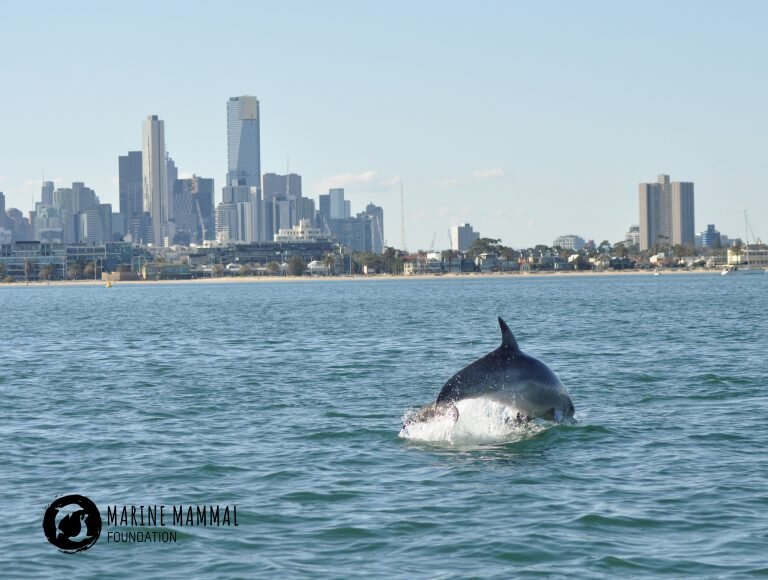Eavesdropping on Burrunan dolphins as the water goes silent
Research on endangered species remains crucial, but how can we do this in the face of strict social distancing regulations?
The Marine Mammal Foundation, like many other not-for-profit charity organisations, is making great changes to our online community and youth engagement programs, but how do we continue our in-field activities?
In these unprecedented times, we are seeing changes in the behaviour of wildlife in usually-busy hubs due to lack of human presence. So how will this affect our iconic Burrunan dolphins?
Only formally identified and described as a new dolphin species in 2011 by the Marine Mammal Foundation’s Director Dr Kate Robb, this species is already listed as endangered due to its small population size of less than 200 dolphins and significant threats.
One of the main objectives of MMF’s Project Burrunan is to investigate human-induced threats such as marine noise. Burrunan dolphins use sound for many core biological activities, such as finding food, mother-calf communication, social cohesion, and navigation. In addition to this marine wildlife-produced sound, the marine ‘soundscape’ is composed of two other sound types: sound created by non-living events, such as noise from wind and waves; and sound produced by human activities, such as noise from shipping or recreational boating. In a murky marine environment, sound is the most effective method for communication, Dolphins rely on sound in support of various life functions. They communicate to facilitate group behaviours, whistle their names when meeting different groups and click for echolocation during navigation and foraging.
Human-induced underwater sound is on the rise as a result of ever-increasing global coastal tourism, recreational boating, and transportation. Recreational vessels, in particular, operate at the same frequency that dolphins communicate and can therefore have a masking effect, or in other words, mean that individuals may not be able to effectively hear each other. Increased anthropogenic marine noise has been shown to displace dolphins and whales from high impact areas, but can also impact on their health.
This can be compared to trying to sleep with a car constantly beeping its horn in front of your room. Would you be able to get the rest you need to function the next day? These are the sorts of marine soundscape impacts our research is trying to assess.
With the community largely following the ‘if you can stay home, you must’ directive, and now with bans on recreational vessel activity, this situation provides us with a very unique opportunity to see how the Burrunan are responding!
But how do we do this when our researchers are also restricting their time on the water? For the past year, we have been using some amazing new technology to record underwater noise, including dolphin sounds. SoundTraps, which are passive acoustic monitoring stations, have been deployed in both Port Phillip Bay and the Gippsland Lakes; the only two locations in Victoria that the Burrunan call home.
These underwater listening stations record 5 minutes per every 20 minutes for months at a time before having to be retrieved and redeployed. It is incredibly exciting to hear for the first time how the Burrunan are using different areas on a 24-hour basis. Recording and listening to the noises our dolphins produce, known as their acoustic repertoire, will help us define which vocalisation types are associated with different physical behaviours. This will allow us to understand more about Burrunan movement patterns, as well as highlight areas of high biological importance. The knowledge received from the study of the acoustic repertoire of the Burrunan dolphin will further inform recommendations for conservation management and the mitigation of potential disturbances.
During these unprecedented times, we can for the first time ever explore the impacts of such a dramatic decline in vessels on the water and therefore a reduction in human-induced underwater noise. At this stage, we don’t know how the Burrunan dolphins will react, so while we have all been living our lives from home these past few months, a silver lining for us is to see the results of this sound-scape respite, and with the recent relaxation of restrictions, observe how things change with the resumption of our normal boating and fishing activities.
Check out our Channel Nine news story with Reid Butler on our research of Port Phillip Bay’s Burrunan dolphins during Victoria’s COVID-19 lockdown.




